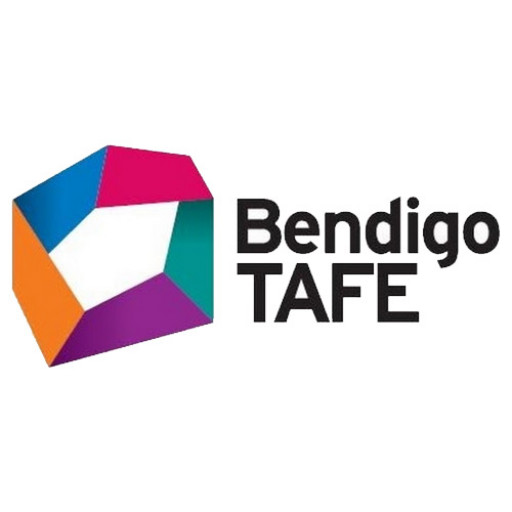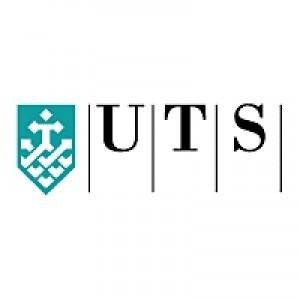Engineering Drafting at Bendigo TAFE is a comprehensive program designed to equip students with the essential skills and knowledge required for a successful career in engineering design and drafting. This course focuses on developing proficiency in technical drawing, computer-aided design (CAD), and engineering principles, preparing graduates to contribute effectively to various engineering projects across multiple industries. Throughout the program, students learn to interpret complex technical specifications, produce accurate detailed drawings, and use industry-standard software to bring engineering concepts to life. The curriculum covers fundamental topics such as mechanical, civil, electrical, and structural drafting, ensuring a well-rounded understanding of drafting practices applicable in diverse engineering fields.
Students will engage in hands-on training using the latest CAD software, gaining practical experience in creating 2D and 3D models, technical diagrams, and assembly drawings. The program emphasizes precision, attention to detail, and adherence to industry standards, which are critical for ensuring the success and safety of engineering projects. Additionally, students will develop skills in reading and interpreting engineering drawings, understanding material specifications, and applying design principles effectively. The course also incorporates fundamental engineering concepts such as force analysis, load calculations, and structural integrity, providing a solid foundation for future specialization.
Bendigo TAFE's Engineering Drafting program is designed to foster both technical expertise and professional skills. Students will have opportunities for practical placements and industry projects, allowing them to apply their learning in real-world settings and establish valuable industry connections. The program aims to prepare graduates for employment in engineering drafting offices, manufacturing industries, construction companies, and consulting firms, among others. By the end of the course, students will be capable of working as CAD technicians, draftspersons, or engineering assistants, supporting engineering teams in designing safe, efficient, and innovative solutions.
This qualification emphasizes lifelong learning, critical thinking, and problem-solving abilities, ensuring graduates are adaptable to evolving technological advancements and industry requirements. Upon successful completion, students will receive a nationally recognized qualification, opening pathways to further education or immediate employment within the engineering sector. Whether you aspire to work in mechanical, civil, electrical, or structural engineering environments, Bendigo TAFE’s Engineering Drafting program provides the practical skills, technical knowledge, and industry insight necessary to launch a successful career in engineering design and drafting.
The Engineering Drafting program at Bendigo TAFE offers students comprehensive training in the principles and practices of technical drawing and design within the engineering sector. This course is designed to equip students with the skills necessary to produce detailed and accurate engineering drawings used in manufacturing, construction, and design industries. Throughout the program, students will learn how to interpret and create technical sketches, schematics, and plans following industry standards and conventions. The curriculum covers fundamental topics such as geometric dimensioning and tolerancing, CAD (Computer-Aided Design) software, 2D and 3D modeling, and drafting techniques for various engineering disciplines including mechanical, civil, and electrical engineering.
Students will develop a strong understanding of engineering materials, manufacturing processes, and safety standards, which are essential for producing practical and functional designs. The program emphasizes hands-on learning through workshops, practical exercises, and industry projects, enabling students to apply their theoretical knowledge in real-world scenarios. Additionally, the course prepares students to work effectively in teams and communicate technical information clearly through drawings and reports.
Graduates of this program will be skilled in using industry-standard software such as AutoCAD, SolidWorks, and other CAD applications. They will also be capable of working alongside engineers, architects, and draftspeople to develop detailed plans and specifications for various engineering projects. The program aims to foster attention to detail, technical competence, and problem-solving abilities, positioning graduates for employment opportunities in drafting firms, manufacturing companies, construction firms, and related industries. Overall, the Engineering Drafting program at Bendigo TAFE provides a solid foundation for a rewarding career in the technical drawing and design field, supporting students in achieving industry-ready skills and qualifications.
Program Requirements for Engineering Drafting at Bendigo TAFE
To enrol in the Engineering Drafting program at Bendigo TAFE, applicants are typically required to meet certain academic and language prerequisites. A relevant high school certificate or equivalent qualification is generally necessary, with a strong emphasis on subjects such as mathematics, physics, and technical drawing. Applicants may need to demonstrate foundational skills in mathematics and technical concepts relevant to drafting and engineering design. Proficiency in English is also essential, so international students might be required to provide evidence of English language proficiency through standardized tests such as IELTS or TOEFL, meeting the minimum score requirements specified by the institution.
Some programs may prefer applicants with prior exposure to CAD (Computer-Aided Design) software or technical drawing; however, this is not always mandatory as foundational skills are usually taught during the course. The program is designed to equip students with practical skills in engineering drafting, including working with industry-standard CAD software, interpreting technical drawings, and understanding engineering principles across various disciplines such as mechanical, civil, and electrical engineering. Therefore, applicants should be prepared to engage in hands-on practical work, classroom learning, and industry projects throughout the course duration.
Additionally, for admission, applicants might need to complete an orientation session or an interview to assess their practical aptitude and motivation for pursuing a career in engineering drafting. Some courses may also encourage or require relevant work experience in a related industry, although this is not typically a strict prerequisite. Prospective students should verify specific entry requirements directly with Bendigo TAFE, as they may vary depending on the applicant's educational background and the current admission policies.
Financial considerations include the payment of tuition fees, which vary depending on the student's residency status and the number of enrolled courses. International students should also consider visa requirements and ensure they meet health and insurance standards mandated by Australian authorities for international study. Additionally, students should prepare for the physical and digital resource access, including textbooks, software licenses, and drafting tools necessary for successful engagement in the program.
In summary, prospective students should ensure they have the necessary academic background, language proficiency, and motivation to succeed in the Engineering Drafting program at Bendigo TAFE. Meeting these requirements helps students gain essential drafting skills, technical knowledge, and industry readiness for careers in engineering design and development.
The Engineering Drafting program at Bendigo TAFE offers a range of flexible study options to accommodate students’ diverse needs and financial situations. Students can choose between full-time, part-time, and online delivery modes, allowing for varying schedules and commitments. The program is designed to provide practical skills and industry-relevant training, which enhances employability and career advancement prospects.
Regarding financing studies, Bendigo TAFE provides several avenues to assist students in funding their education. Commonwealth Supported Place (CSP) options are available for eligible students, which can significantly reduce tuition fees by government subsidy. Domestic students may also access various payment plans, including upfront payments, VET Student Loans, and payment installments, to make covering tuition more manageable. The VET Student Loan scheme allows eligible students to defer part of their tuition fees into a loan, which can be repaid gradually once earning above a certain income threshold, easing immediate financial pressure.
Bendigo TAFE often offers scholarships and bursaries based on merit or financial need, aimed at supporting students in overcoming financial barriers. Additionally, students are encouraged to explore external funding options such as state or federal government grants, sponsorships from industry partners, and employer-supported training schemes. For international students, tuition fees are generally paid in advance, with the possibility of payment plans depending on the student’s country of residence and the specific course arrangements.
Prospective students are advised to consult the Bendigo TAFE finance office or visit the official website for the most current information on tuition fees, available concessions, and financial aid options. The institution provides comprehensive guidance to help students understand their financial commitments and access support programs tailored to their individual circumstances. Overall, Bendigo TAFE aims to make quality engineering education accessible through various financial support mechanisms, ensuring students can focus on developing their skills without undue financial stress.
The Engineering Drafting program at Bendigo TAFE is a comprehensive course designed to equip students with essential skills and knowledge required for a career in engineering design and drafting. This program provides practical training in the use of industry-standard CAD (Computer-Aided Design) software, enabling students to produce detailed engineering drawings and technical plans across various engineering disciplines. The curriculum covers fundamental principles of drafting, technical drawing standards, and 3D modelling, preparing learners to meet industry requirements and work effectively in engineering environments.
Students have opportunities to learn about different engineering sectors such as mechanical, civil, electrical, and structural engineering, gaining a broad understanding of drafting applications across these fields. The program emphasizes hands-on experience, with students engaging in real-world projects that develop their drafting and design skills. They are trained to interpret technical specifications, collaborate with engineers and other technical professionals, and ensure the accuracy and clarity of their drawings.
The qualification prepares graduates for employment or further study in engineering drafting roles in manufacturing, construction, infrastructure, and other engineering sectors. State-of-the-art facilities and experienced instructors support students throughout their learning journey. The program typically includes coursework, practical exercises, industry placements, and assessments aligned with industry standards.
Graduates of the Engineering Drafting program at Bendigo TAFE can pursue roles such as drafting technician, CAD technician, engineering drafter, or design draftsman, among other positions in engineering firms, construction companies, and manufacturing industries. The course also offers pathways to advanced learning, including apprenticeships or further tertiary education in engineering or technical fields. Overall, the program aims to produce highly skilled drafting professionals capable of meeting the demands of diverse engineering projects with professionalism and technical expertise.







